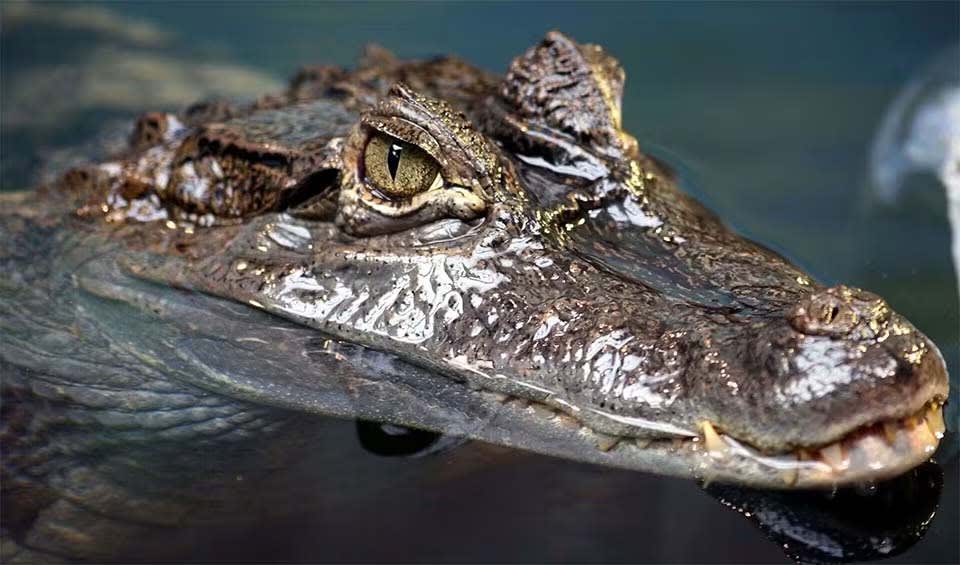The adult spectacled caiman is a formidable aquatic reptile that commands attention with its impressive size and distinctive appearance. Ranging in color from drab olive to nearly black, these caimans often sport striking yellow or black crossbands along their bodies, adding to their visual allure. One of their most notable features is the bony bridge connecting their eyes, which gives them their common name, “spectacled” caimans.
Despite their formidable appearance, spectacled caimans lead a sedentary lifestyle, spending much of their day submerged underwater, where they wait for unsuspecting prey to pass by. They are primarily nocturnal hunters, relying on the cover of darkness to ambush their quarry. However, they can also be observed basking in the sun along the water’s edge during the morning and early afternoon, taking advantage of the warmth to regulate their body temperature.
Spectacled caimans exhibit a diverse diet reflective of their carnivorous nature, consuming a wide range of prey items that vary in size and type. From insects, snails, and crabs to larger fare such as fish, lizards, snakes, turtles, mammals, and birds, these caimans are opportunistic feeders capable of adapting to changing food availability in their environment.
Interestingly, the size of spectacled caimans can vary depending on the abundance and size of their prey. In situations where several caimans of different sizes coexist in close proximity, competition for resources may lead to cannibalistic behavior, particularly during periods of drought when food sources become scarce.
Distribution
 Belize
Belize Bolivia
Bolivia Brazil
Brazil Colombia
Colombia Costa Rica
Costa Rica Cuba
Cuba Ecuador
Ecuador El Salvador
El Salvador French Guiana
French Guiana Guatemala
Guatemala Guyana
Guyana Honduras
Honduras Mexico
Mexico Nicaragua
Nicaragua Panama
Panama Peru
Peru Puerto Rico
Puerto Rico Suriname
Suriname Trinidad & Tobago
Trinidad & Tobago United States
United States Venezuela
VenezuelaAnything we've missed?
Help us improve this page by suggesting edits. Glory never dies!
Suggest an editGet to know me
Terrestrial / Aquatic
Altricial / Precocial
Polygamous / Monogamous
Dimorphic (size)/ Monomorphic
Active: Diurnal / Nocturnal
Social behavior: Solitary / Pack / Herd
Diet: Carnivore / Herbivore / Omnivore / Piscivorous / Insectivore
Migratory: Yes / No
Domesticated: Yes / No
Dangerous: Yes / No






